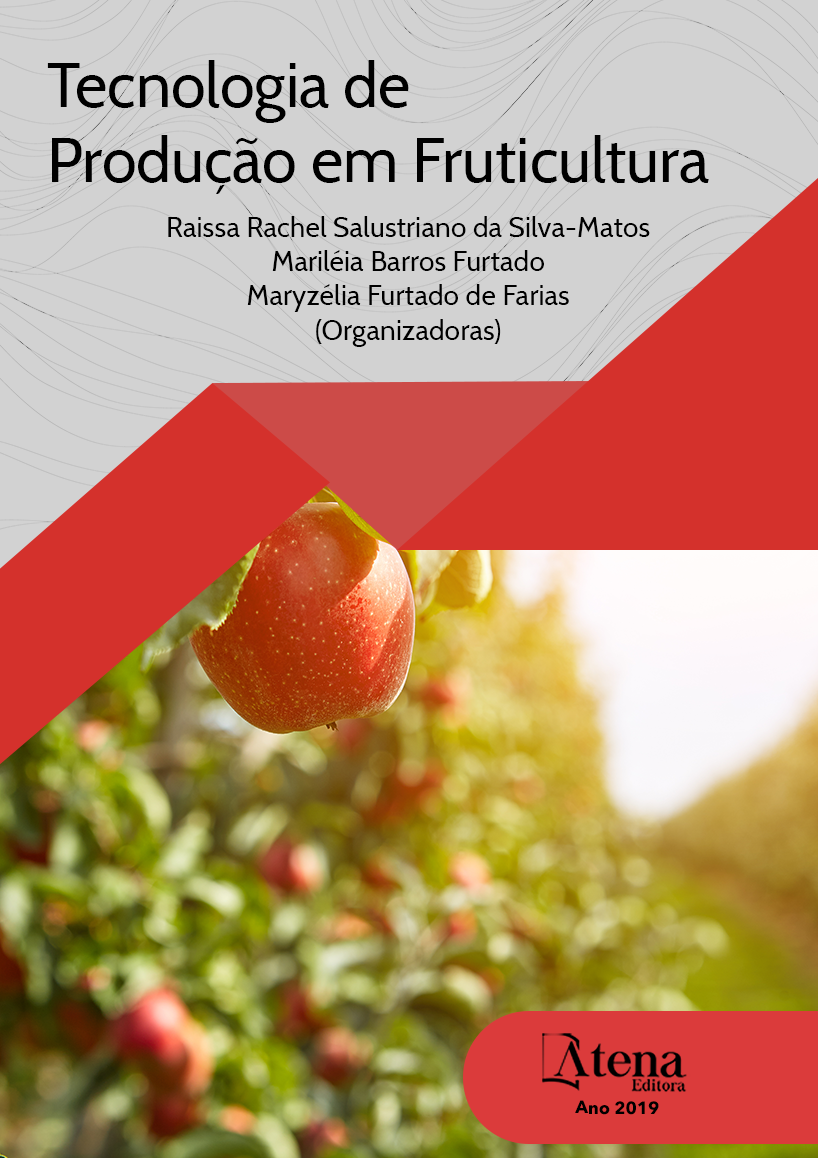
COMPORTAMENTO DIFERENCIAL DE CULTIVARES DE MAMOEIRO, INTRODUZIDAS DO ESTADO DO ESPÍRITO SANTO, À INFECÇÃO DE Corynespora cassiicola (Berk. & Curt.) Wei. E AOS NUTRIENTES, EM CONDIÇÕES EDAFOCLIMÁTICAS DO AMAZONAS
Com os objetivos de introduzir,
avaliar e identificar cultivares adaptadas às
condições de clima e solo do Estado do Amazonas,
portadoras de elevado potencial produtivo e
de características agronômicas favoráveis à
qualidade, para futuras recomendações aos
produtores, instalou-se um experimento com
quinze cultivares de mamoeiros, espaçamento
de 3,5 m x 2,0 m, em blocos casualizados,
quatro repetições, unidade experimental de 10
plantas em linha. População de 600 plantas,
após sexagem. O preparo da área e os tratos
culturais seguiram as recomendações de
Martins & Costa (2003) e o plantio no campo foi
realizado no dia 29/04/2009. No dia 25/07/2009,
instalou-se o sistema de irrigação com fitas
gotejadoras. Foram avaliadas as características
“Porcentagem de folhas com lesões provocadas
por C. cassiicola”, “Nível de lesões em folhas
provocadas pela infecção de C. cassiicola” e,
“Teores de nutrientes nas folhas”. Os dados
médios foram submetidos à análise de variância
usando-se o software PROG GLM, e as médias
das características foram comparadas entre
as cultivares por meio do Teste Scott-Knott. A
cultivar Caliman M-5 se destacou entre todas
as demais, nas três avaliações, apresentando
níveis de lesões de Corynespora cassiicola
próximos de zero. A avaliação de “porcentagem
de folhas lesionadas” poderá complementar as
informações de “nível de lesões nas folhas”,
com o objetivo de se estabelecer o nível de
controle da doença
COMPORTAMENTO DIFERENCIAL DE CULTIVARES DE MAMOEIRO, INTRODUZIDAS DO ESTADO DO ESPÍRITO SANTO, À INFECÇÃO DE Corynespora cassiicola (Berk. & Curt.) Wei. E AOS NUTRIENTES, EM CONDIÇÕES EDAFOCLIMÁTICAS DO AMAZONAS
-
DOI: 10.22533/at.ed.03119091012
-
Palavras-chave: variabilidade genética, resistência à doença, adaptabilidade, nutrição de plantas, Carica papaya
-
Keywords: Genetic variability, disease resistance, adaptability, nutrition of plants, Carica papaya.
-
Abstract:
With the objectives of introducing,
evaluating and identifying cultivars adapted to
the conditions of climate and soil of the state
of Amazonas, with high productive potential and
agronomic characteristics favorable to quality, for future recommendations to the producers, an experiment was installed with fifteen
cultivars of papaya trees, spacing of 3,5m x 2,0m, in randomized blocks, four replications,
experimental unit of 10 plants in line. Population of 600 plants, after sexing. The
preparation of the area and the cultural tracts followed the recommendations of Martins
& Costa (2003), and the planting in the field was carried out on day 29/04/2009. On
day 25/07/2009, the irrigation system was installed with drip tapes. The characteristics
“percentage of leaves with lesions caused by C. cassiicola” , “level of lesions in the
leaves caused by C. cassiicola infection were evaluated” and, “Nutrient contents in
leaves”. The mean data were subjected to analysis of variance using the software
PROG GLM, and the means of the characteristics were compared among the cultivars
through the Scott-Knott test. The cultivar Caliman M-5 stood out among all the others, in
the three assessments, presenting levels of lesions of Corynespora cassiicola close to
zero. The evaluation of “percentage of injured leaves” may complement the information
of “level of lesions in the leaves”, with the objective of establishing the level of disease
control.
-
Número de páginas: 15
- Enilson de Barros Silva
- Scheilla Marina Bragança
- Lucio Pereira S


